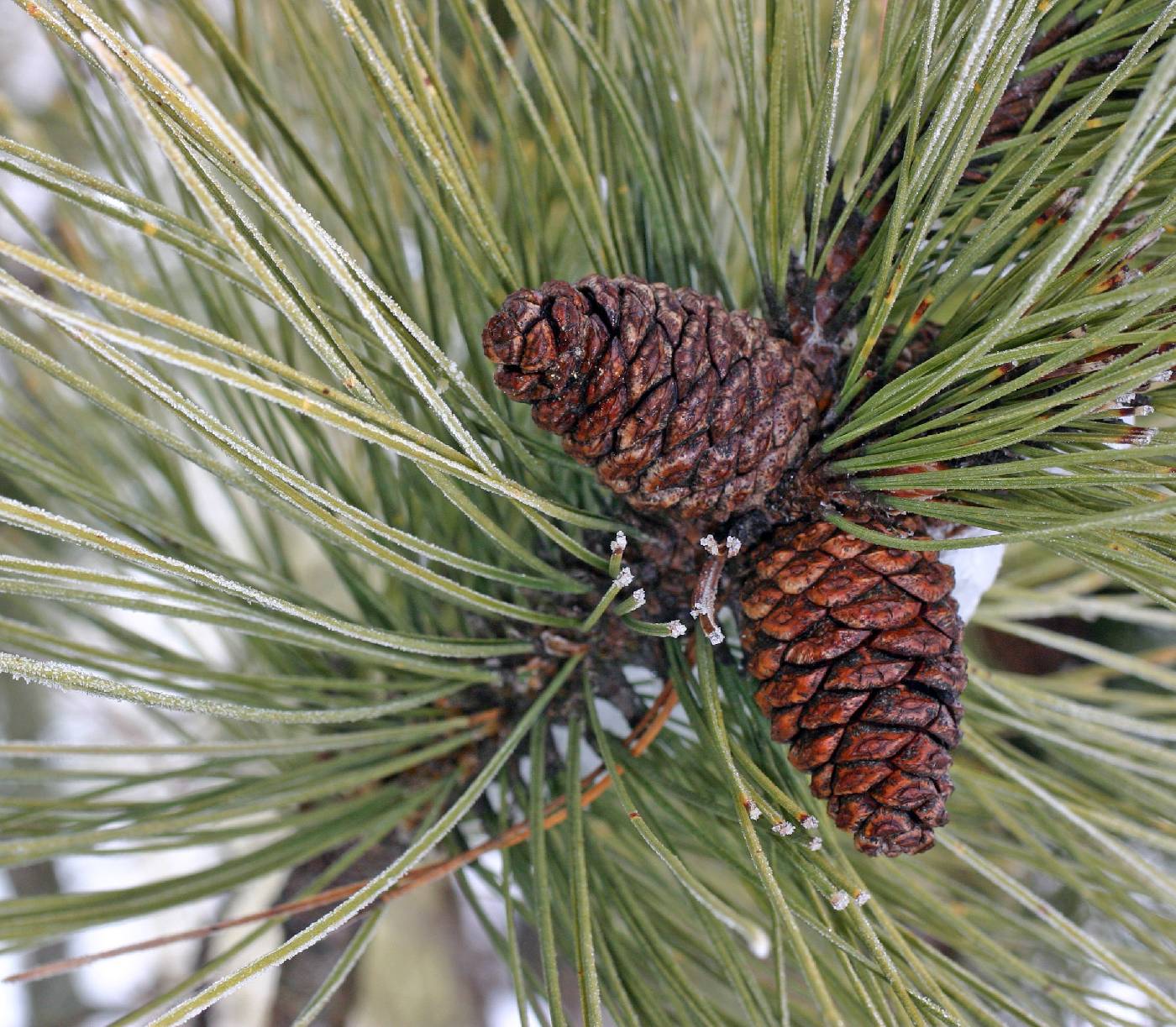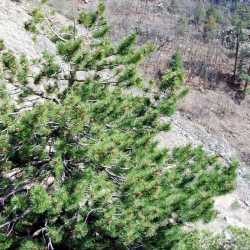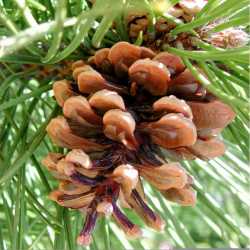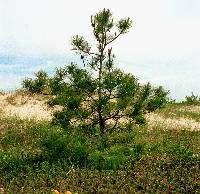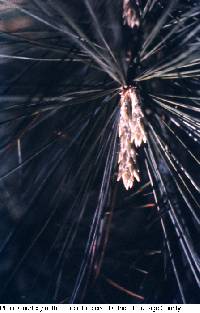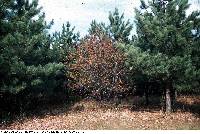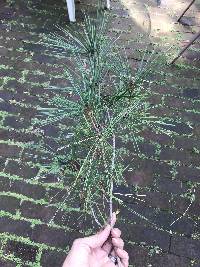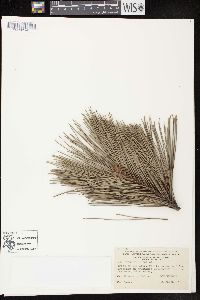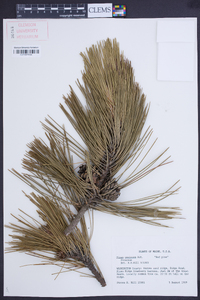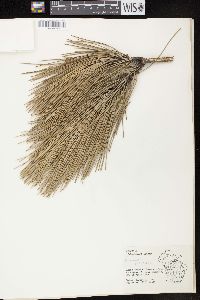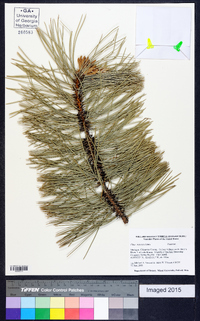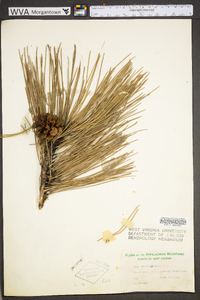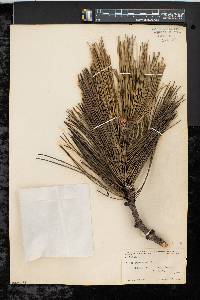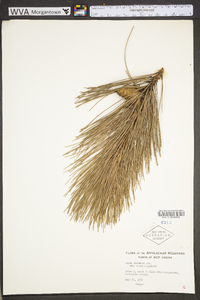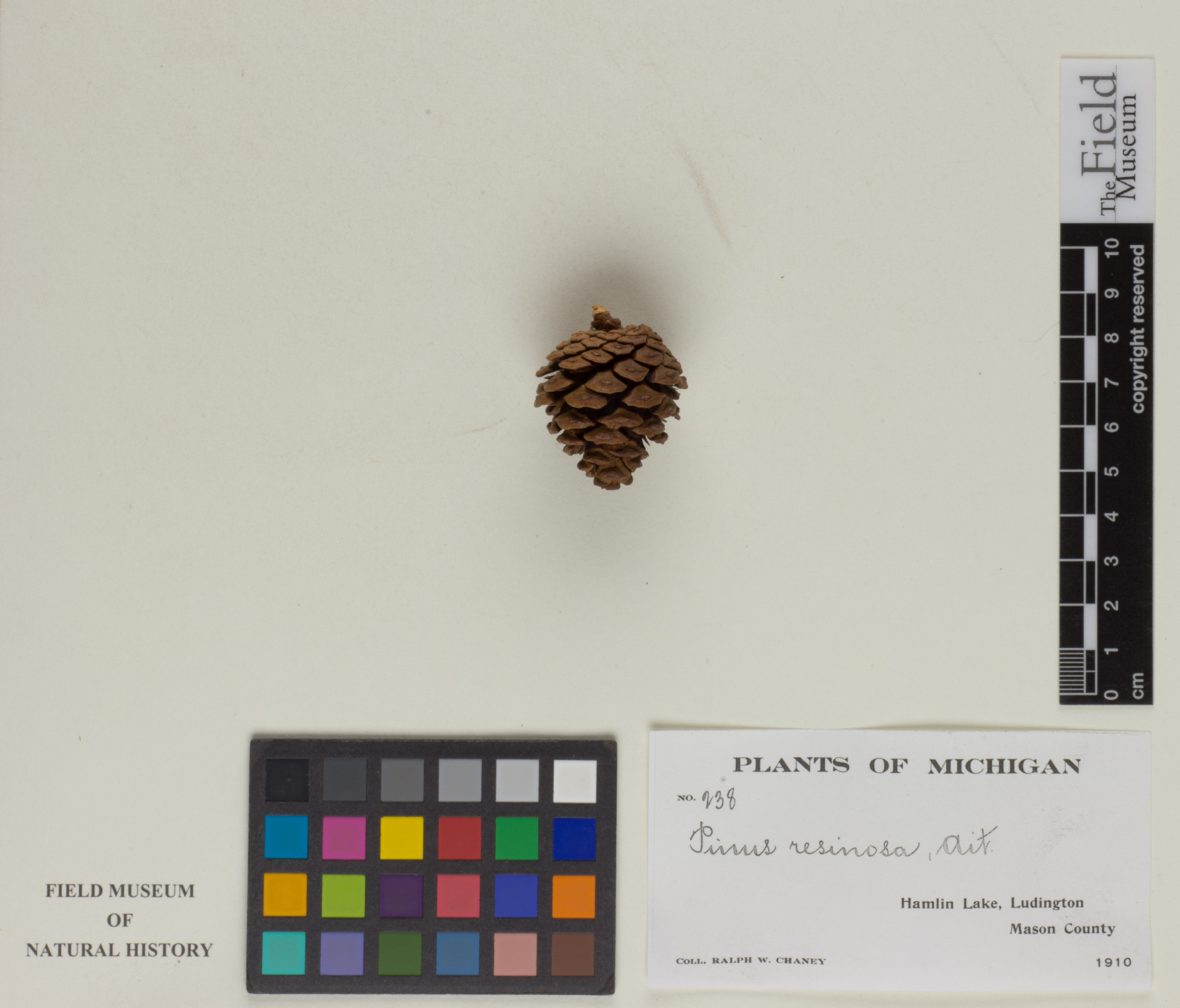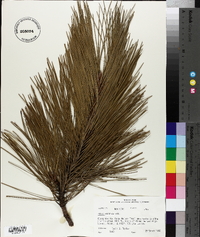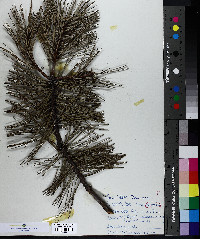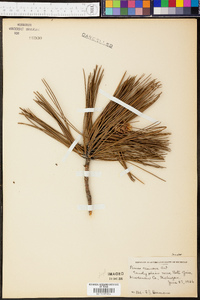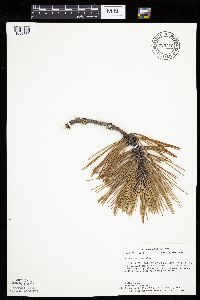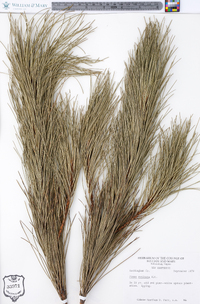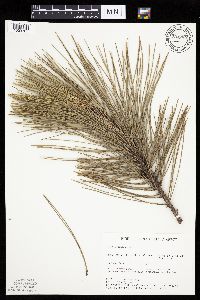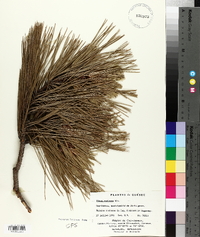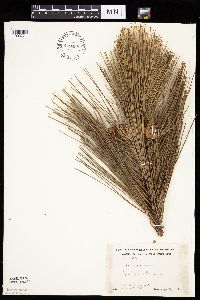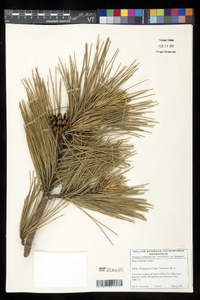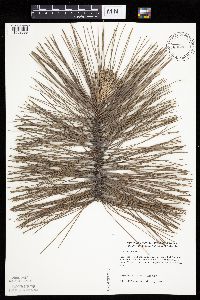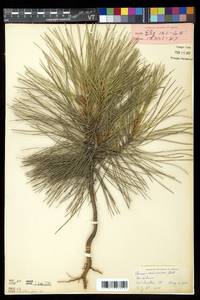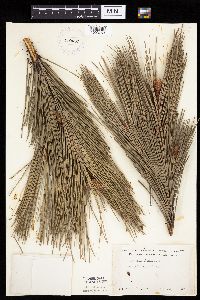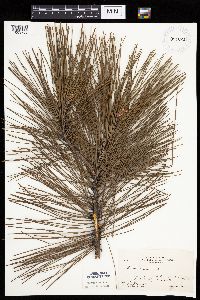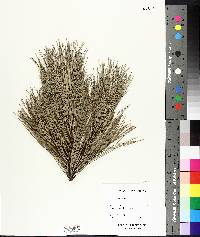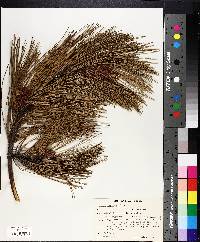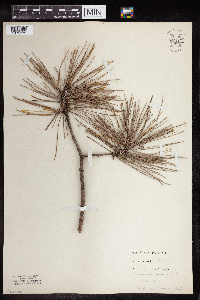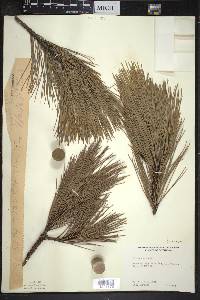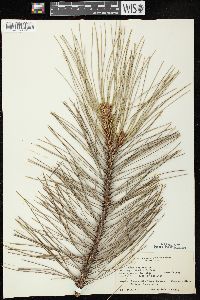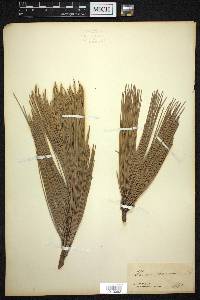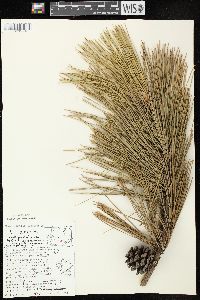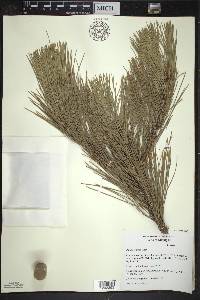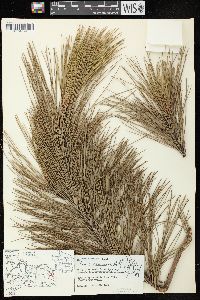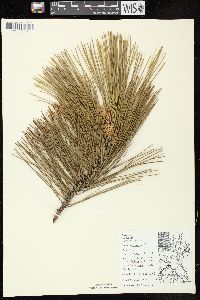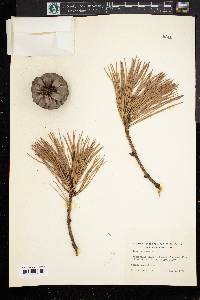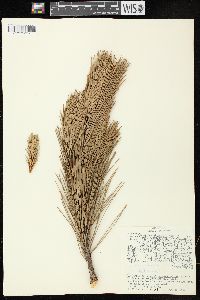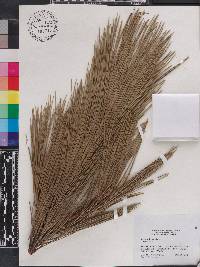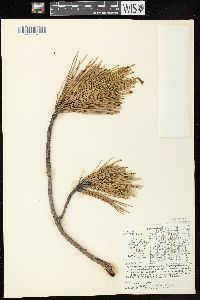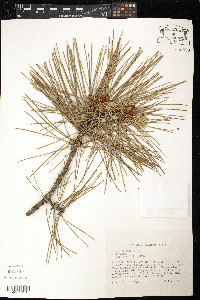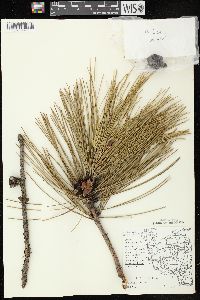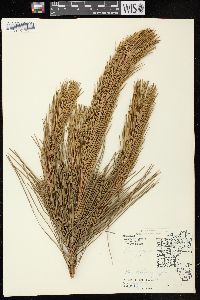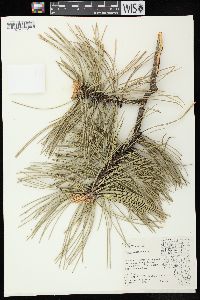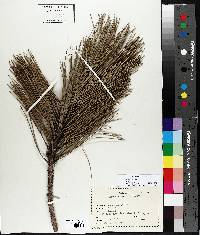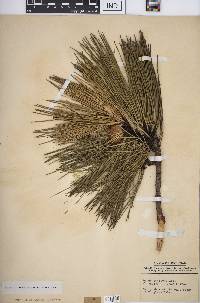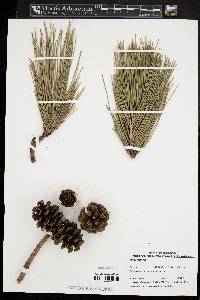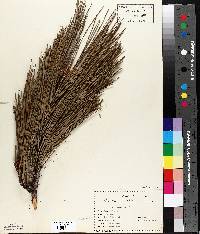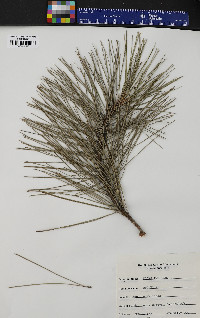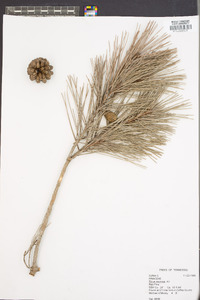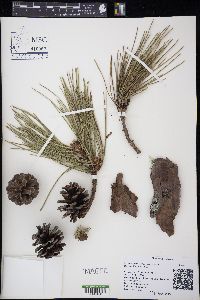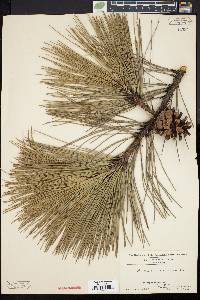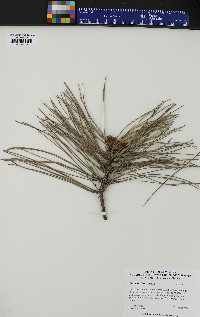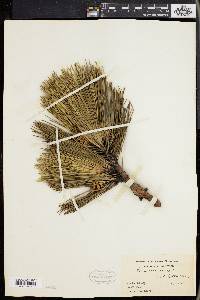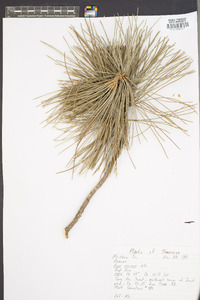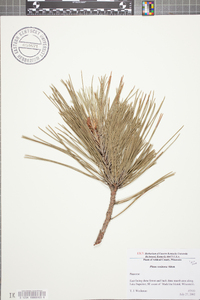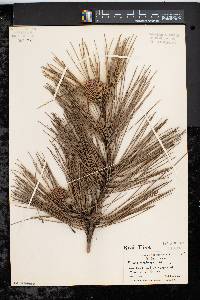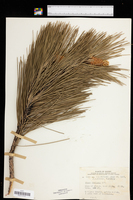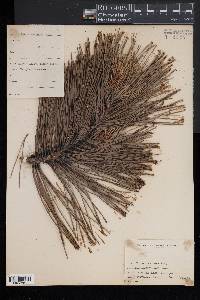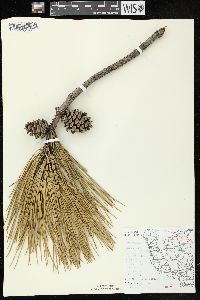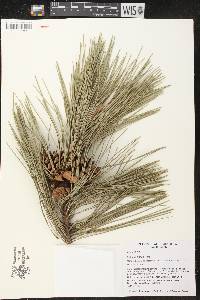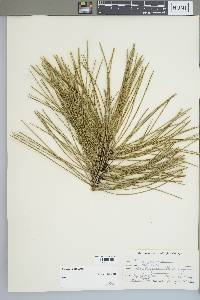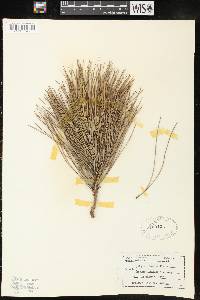
|
|
|
|
Family: Pinaceae
Red Pine, more...Norway Pine
|
Trees to 37 m; trunk to 1.5 m diam., straight; crown narrowly rounded. Bark light red-brown, furrowed and cross-checked into irregularly rectangular, scaly plates. Branches spreading-ascending; twigs moderately slender (to 1 cm thick), orange- to red-brown, aging darker brown, rough. Buds ovoid-acuminate, red-brown, to ca. 2 cm, resinous; scale margins fringed. Leaves 2 per fascicle, straight or slightly twisted, brittle, breaking cleanly when bent, deep yellow-green, all surfaces with narrow stomatal bands, margins serrulate, apex short-conic, acute; sheath 1--2.5 cm, base persistent. Pollen cones ellipsoid, ca. 15 mm, dark purple. Seed cones maturing and opening in 2 years, spreading, symmetric, ovoid before opening, broadly ovoid to nearly globose when open, 3.5--6 cm, light red-brown, nearly sessile; apophyses slightly thickened, slightly raised, transversely low-keeled; umbo central, centrally depressed, unarmed. Seeds ovoid; body 3--5 mm, brown; wing to 20 mm. 2n =24. Sandy soils, eastern boreal forests; 200--800(--1300)m; Man., N.B., Nfld., N.S., Ont., P.E.I., Que.; Conn., Ill., Maine, Mass., Mich., Minn., N.H., N.J., N.Y., Pa., Vt., W.Va., Wis. Pinus resinosa was once the most important timber pine in the Great Lakes region. Norway pine (Pinus resinosa) is the state tree of Minnesota.
Large tree 20 - 30 m tall, trunk diameter 45 cm - 1 m Bark: reddish to pinkish brown, thick, flaky, and divided irregularly into scaly plates. Twigs: orangish brown, becoming rough with scales. Buds: reddish brown, about 2 cm long, egg-shaped or conical, slightly pointed, with loose scales. Form: pyramidal. Pollen cones: purple, 1.3 - 2 cm long, cylindrical, clustered at the base of last year's shoots in the mid-crown. Needles: in clusters of two, shiny dark green, 10 - 17 cm long, sharp-pointed, straight, flexible (but will snap apart when bent), and growing from an elongated, persistent sheath. Young seed cones: red, small, spherical, near the tips of new shoots in the upper crown. Pollination between cones occurs in April and May. Mature seed cones: woody, nearly stalkless, brown, about 5 cm long, and egg-shaped. Scales lack prickles and are thickest at the apex. Seeds mottled brown, about 3 mm long, oval to triangular, with wings 1 - 1.5 cm long. Similar species: The similar P. nigra differs by having needles that do not snap apart when bent and yellowish brown seed cones that bear prickles. Habitat and ecology: In the Chicago Region, Pinus resinosa is known only from Lake Forest in Lake County, Illinois, where it occurred near the base of a clay bluff. Found along sandstone bluffs in areas west of the Chicago Region. Occurence in the Chicago region: native Notes: Pinus resinosa is a common ornamental and shade tree, easily cultivated in nurseries. The disease Gremmeniella canker, caused by Gremmeniella abietina, affects young trees. The wood is used for general construction, bridges, ships, ladders, pulp, poles, and interior trim. Etymology: Pinus is the Latin word for pine. Resinosa means resinous. Author: The Morton Arboretum Tree to 40 m; bark becoming light red-brown, with scaly plates; winter buds ca 1.5 cm, the scales red-brown with white-fringed margins, not very resinous; lvs in 2's, persisting 4-5 years, dark green, 9-16 cm, snapping cleanly when bent; cones spreading, conic- ovoid, 4-8 cm, the apophysis thickened, the umbo smooth and spineless; seeds 1.5-2 cm. Dry, sandy or rocky soil; Nf. and N.S. to se. Man., s. to Conn., Pa., n. Ill., and Minn., and in the mts. to W.Va. Gleason, Henry A. & Cronquist, Arthur J. 1991. Manual of vascular plants of northeastern United States and adjacent Canada. lxxv + 910 pp. ©The New York Botanical Garden. All rights reserved. Used by permission. |
|
|
|

